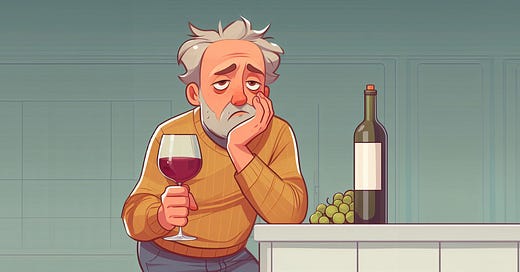I am by nature an early adopter of technology. Without early adopters, the pace of innovation would be considerably slower. When the flat LCD screen TV came out, I purchased a 42” for a whopping $4,500. It was about 6” deep and weighed a ton. However, the last one I purchased, that is 60” was around $800. Had early adopters not purchased early editions, consumers would not be buying the lower cost items later. This goes for many items like the first mobile phones, electric cars, social media, and lately AI.
So, what is my point? There's recently been a lot of dialogue about falling wines sales and how the next generation is not taking interest in the segment. To me, this stems from product boredom perpetrated in part by the three-tier system. Wholesale distributors prefer to play it safe, leaving out innovative, new demographic catching products for products that are known, turnover quickly, and are from long time partners.
The public company Vintage Wine Estates (VWE) provides a micro view of what is happening to large producers. VWE has been devastated by the wholesalers cutting back on SKU’s. In Vintage Wine Estates Nine Month Fiscal 2023 results, they reported cutting over 2,000 SKU’s and feel they can cut their remaining SKU’s by 50% again. This is both a streamlining of business but also a direct result of wholesale destocking. Thus consumer choice is shrinking. With wholesalers deciding to carry less SKUS, they are providing an even greater reason for the liberalization of the direct to consumer and self distribution channels. If the three-tier system cannot handle the speed of innovation and change of consumer preferences, then this is where the small craft producers fill the gap on product boredom, and keep the wine market growing, benefitting all stakeholders.
Simply put, direct sales foster innovation. Innovation fosters excitement. And excitement brings in new customers.
Not all new products will survive, but direct sales allow for fast iterations of products until the right product is found. These products can then get out to the market quickly, develop a following and then grow further as they get into the retail network via the distribution system (yes, the wholesale process does serve a purpose and can help propel brands).
The early adopting customers, who like to explore and sample new products, will pay the higher shipping costs, but do so out of excitement and to show interest. Once producers see that consumers like the product and repeat purchase, they can focus on getting the product into retail stores. The product then is opened to the masses with the convenience of a retail presence.
Direct selling and self-distribution should continue to be opened to allow innovation and create excitement in the market, otherwise the product category will continue to shrink. I see it all the time in direct sales; new and innovative products, blends, packaging come to market, some die a quick death, others become sustainable brands, yet others grow exponentially and enter the distribution channel for wider access to the consumer.
My feeling is we are NOT seeing a lack of innovation in the wine market, we are seeing a lack of accessibility. This leads to product boredom and a declining market.





Love the stack Stephen, but VWS’ post SPAC performance is not at all due to a lack of distribution access.
Steven, I agree with you. It is made worse by distribution's predatory practices. When I was consulting for restaurants, it was common for distributors to prevent Sommeliers from suggesting diversified inventories by offering owners 3 - 6 months of dating (extended terms) - only if their suggested wine list was purchased. Extremely frustrating and in my opinion, a MAJOR reason for unsuccessful wine programs and eventual failures. Distributors were facilitating putting their own clientele out of business and hurting their own volume in the long run.